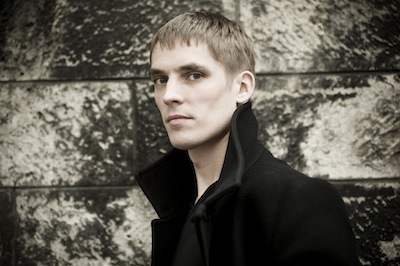Tiberghien’s superlative pianism opens CSO’s French festival in style

The Chicago Symphony Orchestra’s “French Reveries and Passions Festival” kicked off Sunday afternoon with a recital of Impressionist music performed by pianist Cédric Tiberghien at Symphony Center. If future festival events sustain the caliber of musicianship Tiberghien demonstrated in his performance, the next three weeks will be a prolonged sonic treat for Chicago’s music lovers.
The program opened with Ravel’s Gaspard de la Nuit, the notoriously difficult 1908 triptych inspired by poems of Aloysius Bertrand. In the opening “Ondine,” Tiberghien sumptuously sustained the protracted melodic lines around Ravel’s busily shimmering accompaniment, which he never allowed to become intrusive. His broad dynamic range shone through between the thundering climax that represents the water nymph’s amorous rapture and a graceful diminuendo as she returned disappointed to the waves.
The central movement, “Le gibet” (The gallows), features an obsessive repeated pitch evocative of a clock’s chiming, suffused in wandering, perennially unresolved harmonies. These juxtaposed textures evoke contrasting natures of time—its chronological passage as experienced by the living and its unmarked passage in death. Tiberghien executed the two simultaneously in a horrified hush, spinning the nomadic lines while never losing the inexorability of the “clock’s” tolling.
The final “Scarbo” is recognized as one of the most technically demanding movements in the repertoire, as Ravel pushes soloists’ technique to evoke the mercurial exploits of the title dwarf. Tiberghien flung off Scarbo’s demands with ease, even grace, the nervous tremolos of the opening speaking clearly, and the repeated notes of the scherzando main theme well enunciated.
Four Preludes of Debussy followed. Canope was realized with the finest delicacy, Tiberghien’s soft dynamics hovering at the edge of audibility. Les collines d’Anacapri, meant to evoke the hills of the Neapolitan island, was playfully expansive, its galloping figures channeling the rolling landscape. Tiberghien imbued the movement’s folk interlude with a sultry rusticity.
Des pas sur la neige again showcased Tiberghien’s remarkable dynamic control as he drew softer sounds from the depths of the piano than one might imagine possible, and Ce qu’a vu le vent d’ouest featured the composer’s quintessential nautical smoldering, Tiberghien’s incisive virtuosity imbuing the work with an elemental rage.
Karol Szymanowski’s Masques technically opened the second half, but it is more accurate to say that a pair of cell phones did. The ethereal opening bars of the first movement, “Schéhérazade,” were decimated by an electronic interjection; Tiberghien calmly stopped playing, allowed the air to clear, and started the piece again. Unfortunately he had to repeat this gallantry about two minutes later when another device sounded during a grand pause.
After these disruptions, Tiberghien set back about the task of evoking in Szymanowski’s dialect the opium haze of the King Shakriar’s palace. The other two movements— “Tantris le Bouffon” and “Sérénade de Don Juan”—could have used greater expressive contrast, all three pictures blending together in a single haze of Impressionism.
Three Debussy works closed the program, with Masques, D’un cahier d’esquisses, and L’isle joyeuse. Tiberghien brought the same equipoise of melody and textural accompaniment he achieved in Ondine to Masques, and the obsessive repetition of the movement’s pointillist main idea was always freshly invigorated. D’un cahier d’esquisses abounded with freely flowing ideas melded into one another; the frequent return of somber minor cadences suggested a fundamental melancholy. The joyously rolling dotted theme of L’isle joyeuse resolved any emotional ambiguity, and Tiberghien brought his program to an emphatic close with a rumbling downward crescendo that elicited a well-deserved ovation.
Tiberghien stuck with Debussy for his encores, returning to the composer’s preludes. La cathédrale engloutie received an architectonic reading, the vast space in its open harmonies evoking a solemn sanctuary. Feux d’artifice appropriately crackled in Tiberghien’s hands, sending the audience on its way with élan and Debussy’s subtle reference to “La Marseillaise” ringing in its ears.
“French Reveries and Passions” continues with Esa-Pekka Salonen conducting the Chicago Symphony Orchestra in Debussy’s La damoiselle elue and Ravel’s Mother Goose Suite and L’enfant et les sortileges 8 p.m. Thursday, Friday and Saturday. cso.org; 312-294-3000.
Posted in Uncategorized


